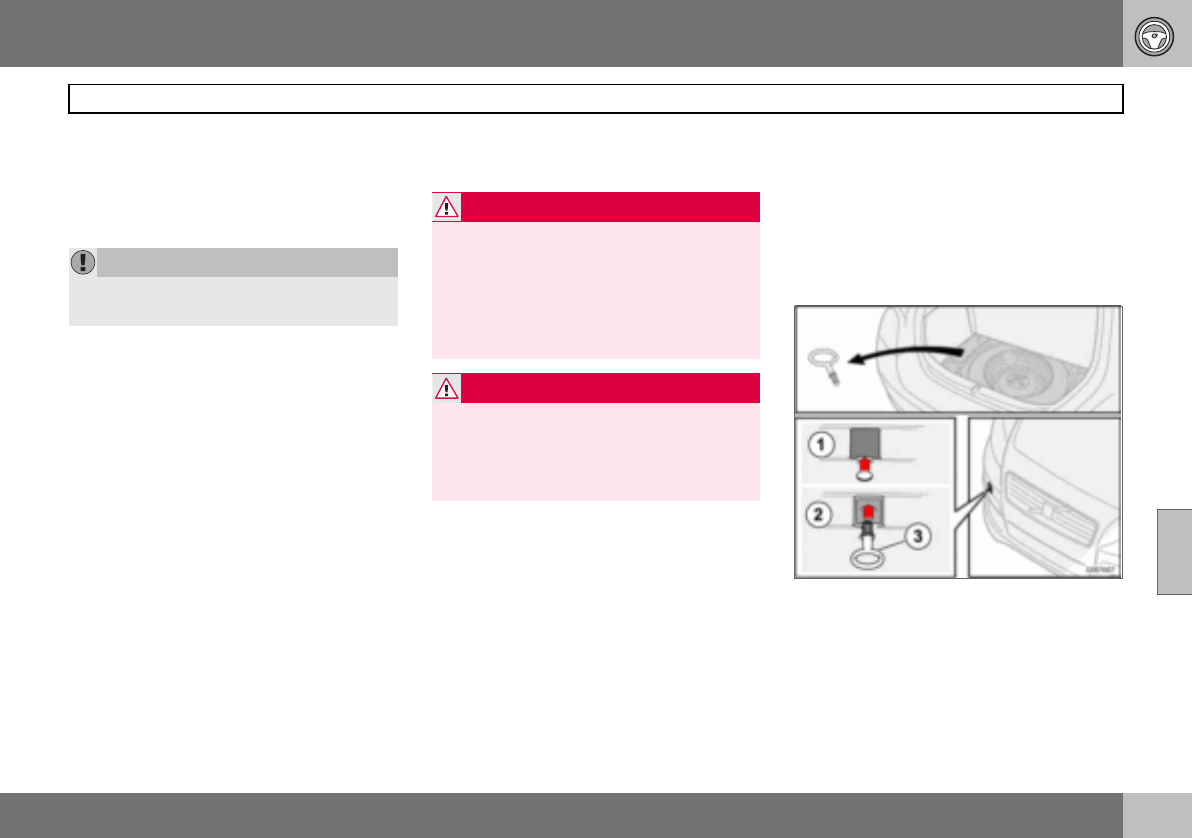
06 Starting and driving
131
Towing and recovery
06
Never tow the car to bump start it
Jump start the car with a donor battery if the
battery is flat and the engine does not start.
Do not bump start the car.
To wi n g
Find out the highest legal speed for towing
before towing the car.
– Turn the ignition switch to position II and
unlock the steering lock so that the car
can be steered, see page 114.
– The ignition key must remain in position II
while the car is being towed.
Automatic gearbox:
– Move the gear selector to position N.
Manual gearbox:
– Move gear lever into neutral.
– Ensure the towrope is always taut to avoid
violent jerks. Keep your foot on the brake
pedal.
Cars with automatic gearbox must not be
towed at speeds above 80 km/h or further
than 80 km. The car must always be towed
facing forward.
Recovery
If only partially raised, cars with automatic
gearbox must not be transported at speeds
above 80 km/h or further than 80 km. During
such transport, the wheels must always roll
forward.
Towing eye
Use the towing eye if the car needs to be
towed on the road. The towing eye is at-
tached in the recess on the right-hand side of
the front or rear bumper. To fit the towing
eye:
1. Take out the towing eye that is located
under the floor hatch in the cargo area.
IMPORTANT
Bump starting the car can damage the cata-
lytic converter.
WARNING
The steering lock stays in the position it was
in when the power was cut off. The steering
lock must be unlocked before towing.
The ignition key must be in position II.
Never remove the ignition key from the igni-
tion switch while driving or when the car is
being towed.
WARNING
The brake servo and power steering do not
work when the engine is switched off. The
brake pedal must be pressed about five
times harder than normal, and the steering
will be considerable heavier than normal.


















